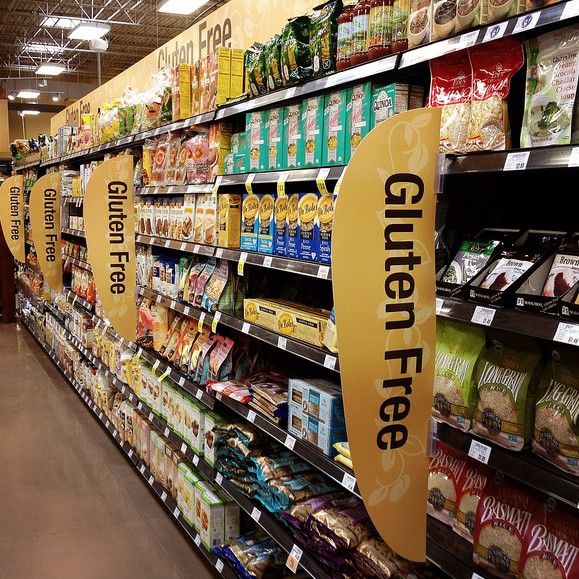Health
Gluten-free information: Basic things you need to know before switching to a GF diet

An aisle for gluten-free foods/ Photo from Flickr/ CC BY-ND 2.0
By now, you have likely seen an explosion of products labeled “gluten-free” in grocery stores and gluten-free recipes on the Internet. It is probably starting to make you curious. Is it a new kind of diet? Should everyone switch to a gluten-free diet to be healthier? Or is it just another diet fad? To get educated about it and to know if it’s the right kind of diet for you, here are the basic things you need to know:
‘Gluten’ defined
Gluten (Latin word for “glue”) is a protein composite found in wheat and other cereal grains. It gives elasticity to bread, helping it rise and keep its shape. Gluten is composed of two proteins, namely glutenin and gliadin, which cause inflammation in the small intestines of people with celiac disease.
What is celiac disease?
According to the Canadian Celiac Association, “Celiac disease is a medical condition in which the absorptive surface of the small intestine is damaged by gluten.
” This inherited autoimmune disease leads to reduced absorption of important nutrients needed to maintain good health, which include Calcium, Iron, Vitamins A, D, E, K and Folate. Health Canada says that, “As many as 300,000 Canadians could have this disease; however, many remain undiagnosed.”
How do I know if I have the disease?
To know whether you have the disease or not, you can get yourself tested through a blood screening test. If the blood test result is positive, then a biopsy of the small intestine will be performed to confirm inflammation. It is important to get tested before making the switch to a new diet since a gluten-free diet can be frustrating, as it requires you to completely remove wheat and many whole grain foods from your diet and to constantly pay close attention to what you are eating. It is also more expensive.
The gluten-free (GF) diet
It is necessary for individuals diagnosed with celiac disease to stick to a gluten-free diet for the remainder of their lives to live healthier and to avoid illness. Those who do not have celiac disease, but have wheat allergies or gluten intolerance can also opt for gluten-free food, as eating food containing gluten can cause bloating, diarrhea, and flatulence.
If you do not have celiac disease or gluten sensitivity, you have the right to go gluten-free by all means, but there are things you need to know first. There has been no scientific evidence yet that proves that going gluten-free is indeed healthier. In an article written by registered dietitian Tanya Zuckerbot for Prevention.com, she said that, “A food billed as ‘gluten-free’ isn’t necessarily healthier. Gluten-free products can be high in calories, fat, and carbohydrates, and some people who go gluten-free actually gain weight.” You may also be at risk for nutritional deficiencies because a GF diet means removing grains, the largest food category, from your meals.
Here is a list of gluten-free foods from Mayo Clinic:
- Beans, seeds, nuts in their natural, unprocessed form
- Fresh eggs
- Fresh meats, fish and poultry (not breaded, batter-coated or marinated)
- Fruits and vegetables
- Most dairy products
- Amaranth
- Arrowroot
- Buckwheat
- Corn and cornmeal
- Flax
- Gluten-free flours (rice, soy, corn, potato, bean)
- Hominy (corn)
- Millet
- Quinoa
- Rice
- Sorghum
- Soy
- Tapioca
- Teff
If you are really decided to try a GF diet, just make sure to still maintain a well-balanced daily diet. It is also advisable to consult a doctor and a dietitian, who can provide you with a list of alternatives.





















